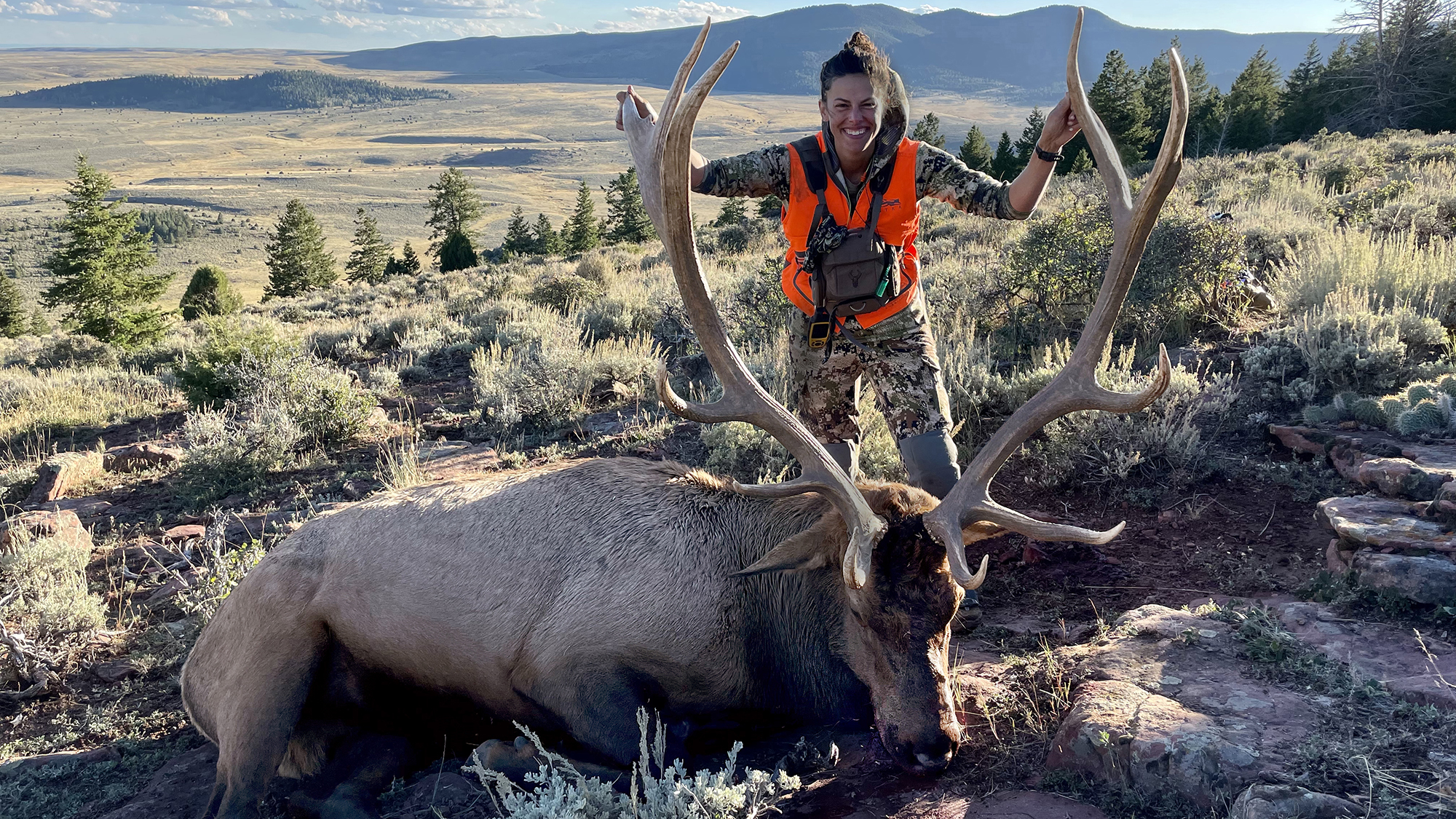“DUDE, I LOVE YOU, but I don’t think we should be doing this in the dark.”
I stop where I am, teetering between handholds on an impossibly steep boulder field, to look at Kali Parmley on the rocks above. I can’t see my hunting partner’s expression in the early-morning dark, but I can hear the unease in her voice. I can also hear bugles below us.
“OK,” I say at last, and reverse course.
I’m loath to abandon my plan for opening day, but Kali isn’t wrong. We left the tent almost three hours ago—plenty of time to hike 2 miles and slip into position above the elk we put to bed. Among them is the best bull I’ve seen in a week of scouting, and I want to kill him. So does every other hunter in the unit.
By the time we retrace our steps, sweating and huffing from the beetle-kill timber, the precious first minutes of an opening day advantage have come and gone. And when the shooting begins in the valley below, there’s not an elk in sight.
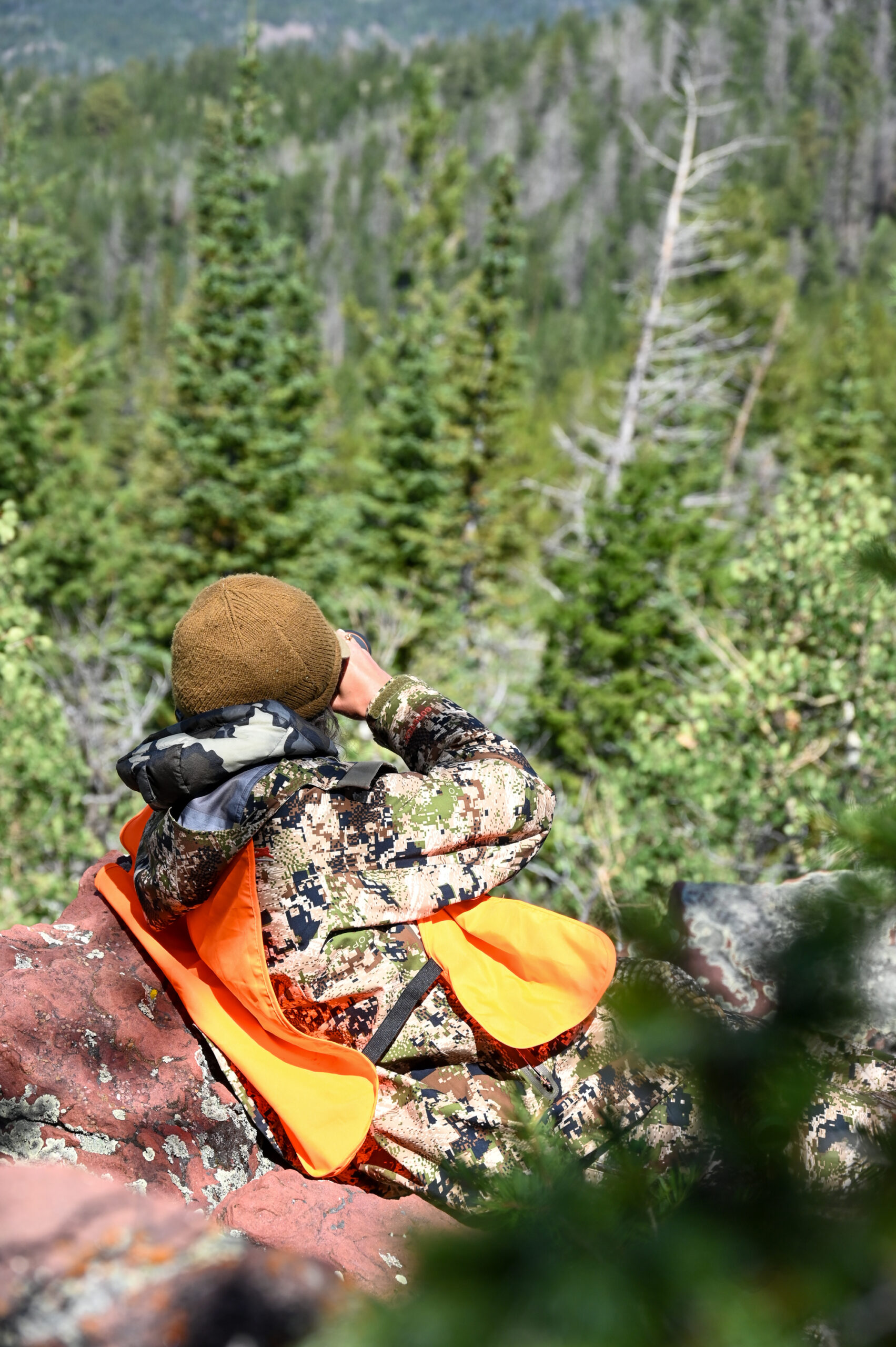
A Compromise, of Sorts
It would normally take a nonresident like me 22 preference points to draw this Utah bull tag. Instead, I won a raffle to hunt a second-tier elk unit and bought a rifle tag during the rut without using a single point. High on such unexpected luck, my first impulse was to alert my usual hunting buddies and invite them along. After the initial excitement wore off and I started thinking about the hunt I wanted, I wasn’t sure it included company.
Part of me—the self-reliant, stubborn part—itched to tackle this without help. I like hunting by myself, and my most rewarding hunts haven’t usually included a hunting partner. But this was more than that. During my career in the outdoor industry, I had picked up the idea that the best hunters hunt alone.
It wasn’t from social media, hunting TV, or YouTube, where influencers, celebrities, and wannabes tout “solo” hunts as the pinnacle of Western big-game hunting. Mostly I got the idea from the skilled hunters I’ve been lucky to join in the backcountry. The unwritten résumés of their hunting careers all have one thing in common: They hunted frequently in their younger years, often by themselves.
To become the hunter I want to be—someone capable of disappearing into the wilderness and returning with a trophy critter—I need to hunt that way too.
The practical part of me pointed out that more eyes make for better glassing and even deboned quarters weigh a shitload. I don’t have anything to prove to anyone, so why rush into the mountains like I do?
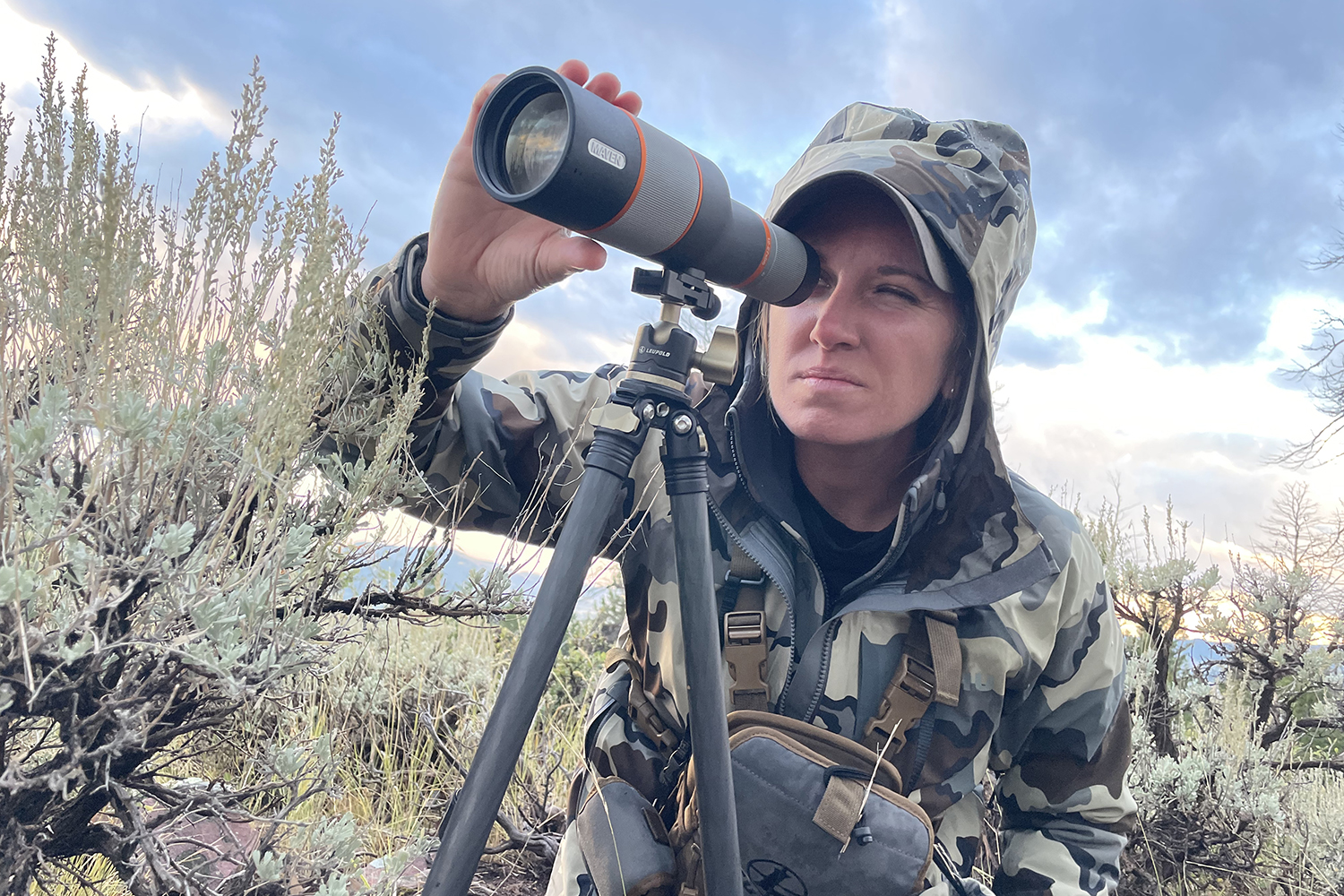
I ended up choosing to hunt with just Kali. I listed the practical reasons to anyone who asked about my plans: She’s dependable in the backcountry, we hunt well together, I could use the extra muscle. What I didn’t say was that I have more elk-hunting experience than her. Hunting with Kali would still accomplish much of what a solo hunt would: I’d be forced to follow my own instincts instead of a mentor’s lead. Because it’s true that I didn’t have anything to prove to anyone else. I wanted to prove it to myself.
So on a sunny day before the mid-September opener, the two of us crammed our hunting packs with enough water for three nights and as many days and staggered up the mountain.
Lessons in Humility
As the shooting subsides, elk begin to stream up the slopes. But these saddles are maddeningly covered in more boulder fields, and Kali and I can’t hike fast enough to intercept them. Eventually we reach one forested peak with a view of the next, where a bull is pushing cows around. A half mile of granite slabs lies between us.
We catch glimpses of feeding calves and the agitated bull through the timber until they bed. Kali naps too as we wait for the wind to shift. I bugle every half hour so the bull can get accustomed to my call; he answers every other one.
In the meantime, I decide to find a way through the boulders. I eventually emerge on a saddle bristling with pines, every single trunk scarred with a rub. Fresh droppings are scattered across the trails between them.
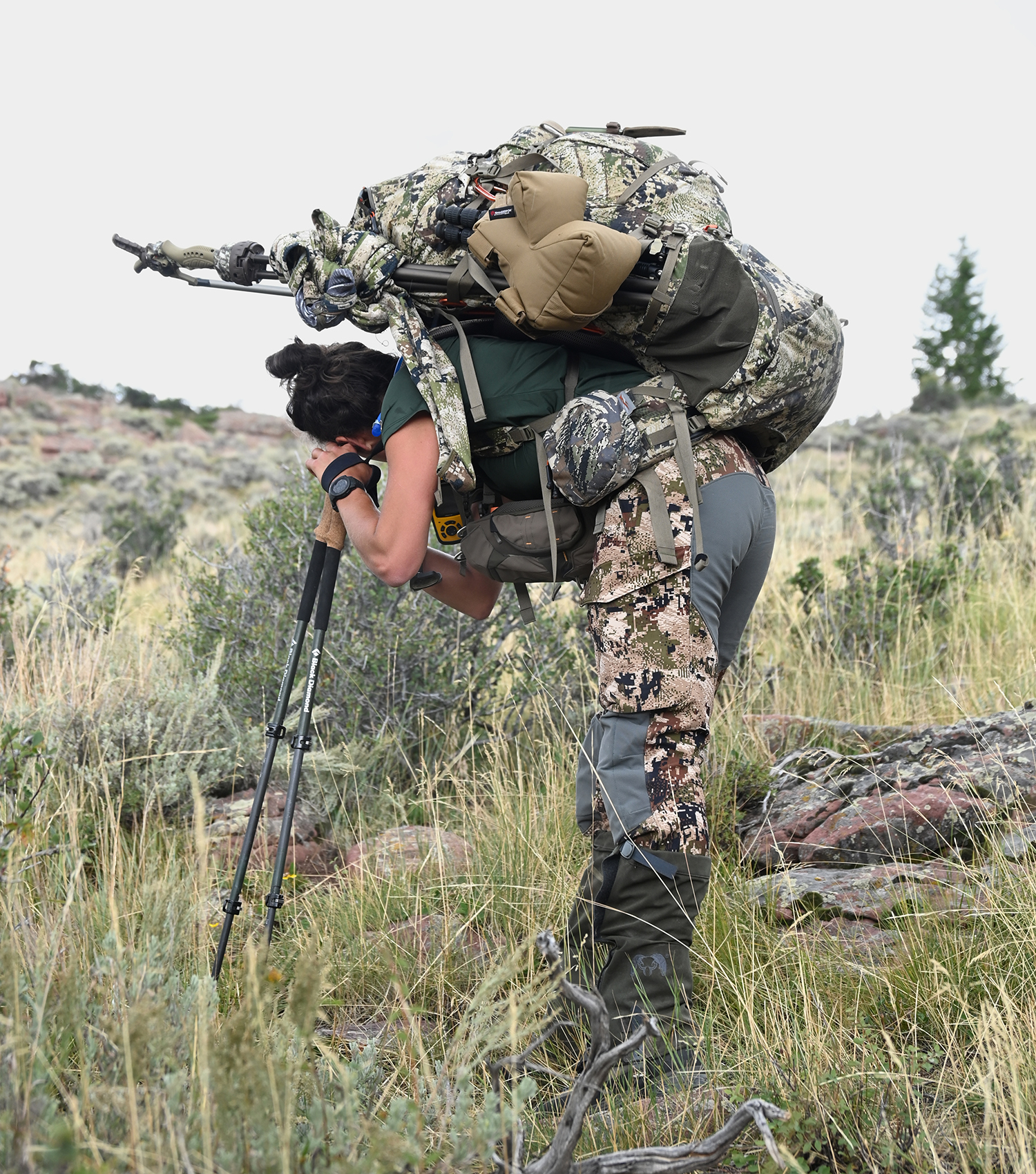
When I return with Kali, it’s to the bugles and chirps of a stirring herd. I cow-call to cover our approach, then throw in the bugle I’ve been using all day. The bull bellows back. We creep forward after each call until we square off at 30 yards in the brush, neither of us able to see the other or willing to push forward. At last, the wind decides the standoff, and a swirling gust shuts him up. The next bugle is 50 yards away, then a hundred.
We hunt our way toward camp, the morning’s failure forgotten in the fun of calling elk. A piece of advice I received this summer has finally started to resonate. “Take your time,” my hunting buddy and OL contributor Aram von Benedikt said. “Unless you’ve got a monster bull in front of you, don’t be in a hurry to shoot something. You might draw a tag like this but once or twice more in your life. Enjoy it.”
Soon we strike up another herd. Determined to be more aggressive this time, Kali and I push them hard as evening falls. Soon we’re completely surrounded, bugles firing off in every direction as satellite bulls circle and a herd bull roars nearby.
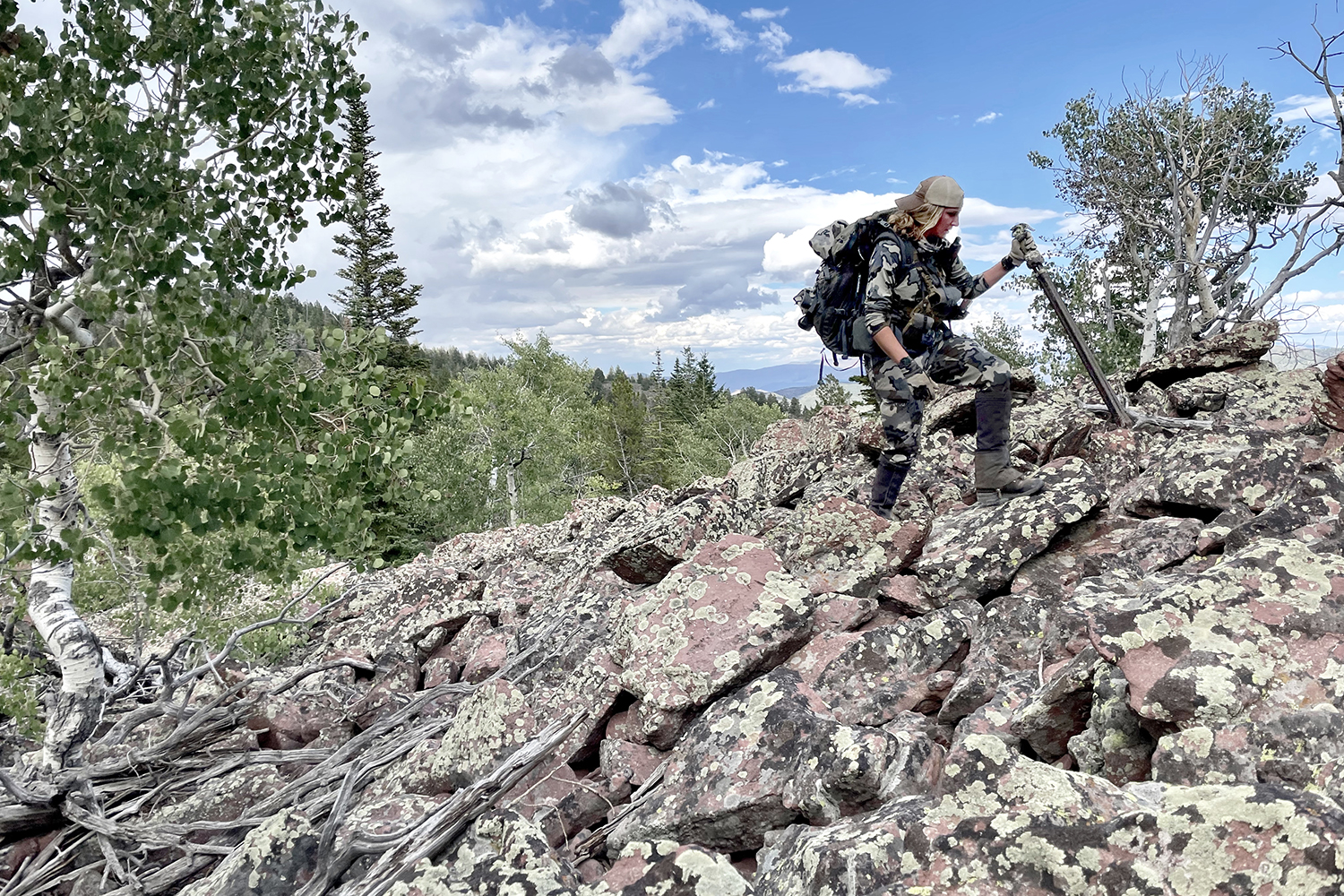
“I see them,” Kali whispers. “Here they come on the right.”
I throw my rifle on a pine branch as a couple cows trot past an opening at 50 yards, followed by a spike. When a nice 6×6 stops with his front half exposed and tilts his head back to bugle, I yank the trigger.
The bull and a cow sprint over a rise in the meadow beyond, and I take off after them. Dread sets in even as I crest the hill and see the pair standing, confused. I raise my rifle on shaking arms and study the bull through the scope. There’s no sign of a hit. When he trots down the hill to rejoin the herd, it’s with a smooth step and a loud bugle.
Lies in the Aspens
“Can you not shoot offhand?” Kali asks the next day.
We’re sitting in a meadow listening for bugles as we slice hunks of sharp cheddar and cured sausage, the only luxuries I packed onto the mountain. The elk are quieter today and off their patterns after the chaos of opening morning. It’s not a critical question, but a curious one.
We’d gotten into the same herd this morning, with familiar results: The bull was unwilling to close the distance, and I wasn’t confident enough to charge in after him. I also suspect Kali is tired of carrying my bulky shooting sticks, and it’s hard to blame her. There are bulls everywhere; why can’t I just shoot one?
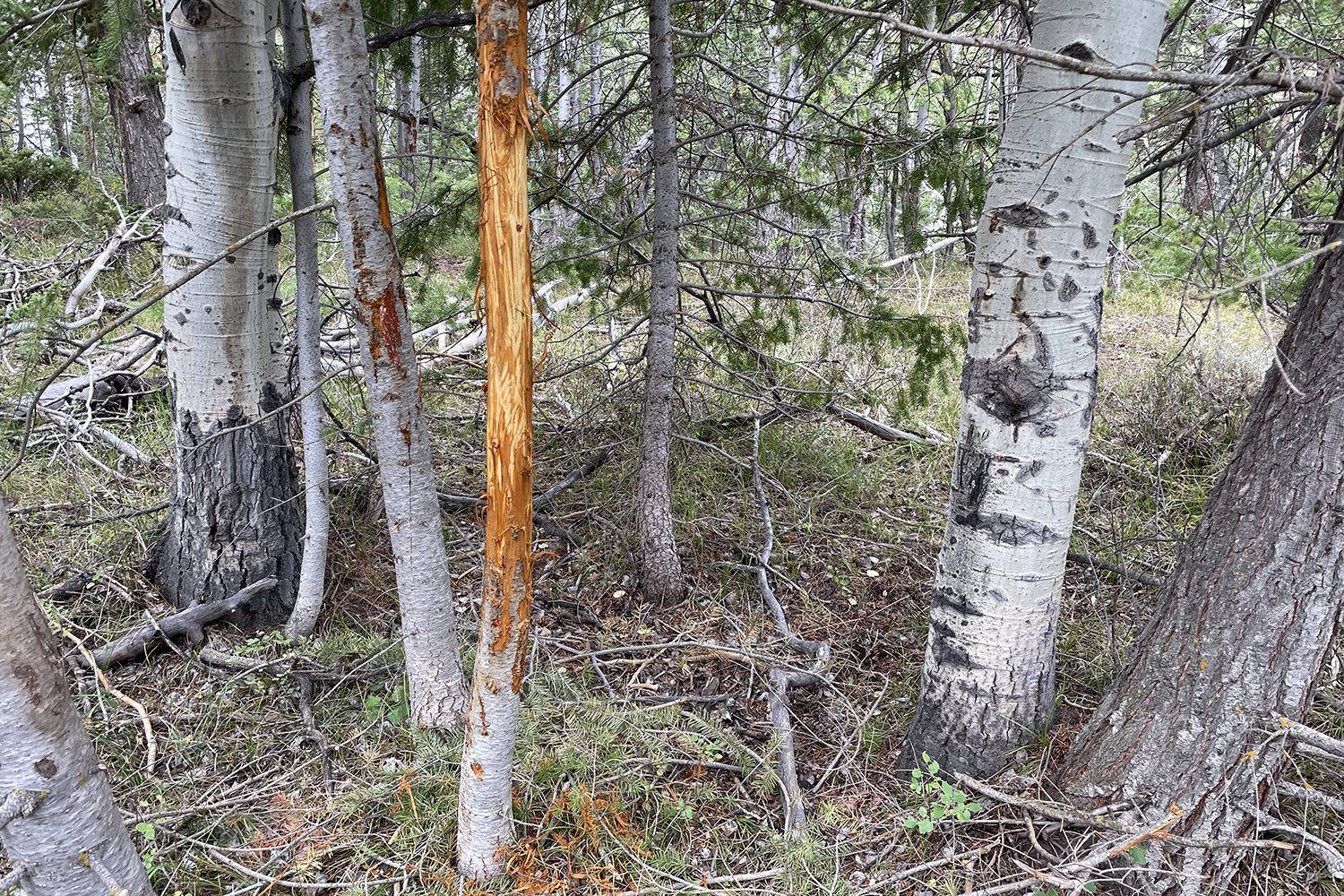
Today and the next day we chase elk up and down the mountain, trying to get another opening like the one I botched. When we run low on water, Kali helps me move camp deeper into the mountain before we hike back to the trucks. She splits off for a night in town to work while I load my empty pack with more water and hike back in alone.
In the morning, I hear the same herd on the remote side of the mountain. The aggressive approach hasn’t been working, so I decide to change my tack. Let’s go slow today.
I still hunt my way down the mountain, paying attention to every boot step. The first elk I see is a young satellite bull who stands from his bed at 10 yards. Soon after, I find a heavy elk trail through a grove of aspens, and the herd bedded in a glade beyond. The herd bull, whose bugle I’ve come to recognize, is pacing out of sight nearby.
It’s not a perfect spot: A property line visible only with onX skirts the far edge of the clearing. There are more elk in the trees, keeping me pinned down at 300 yards. I stay calm, picturing over and over the slow trigger squeeze and my bullet hitting home. When the herd bull finally steps into view, his body remains obscured by a tree. I can see massive eye guards jutting off his forehead and hooking into a crown of tines. Then he steps across the property line.
By the time the herd moves out of sight that evening, I could have shot that bull 20 times over. But I never could call him back onto public. I set up between him and a satellite bull, and the three of us screamed at each other until my mouth went dry. The younger bull wouldn’t shut up, the herd bull wouldn’t leave his cows, and I wouldn’t kill him while he stood on a private ranch.
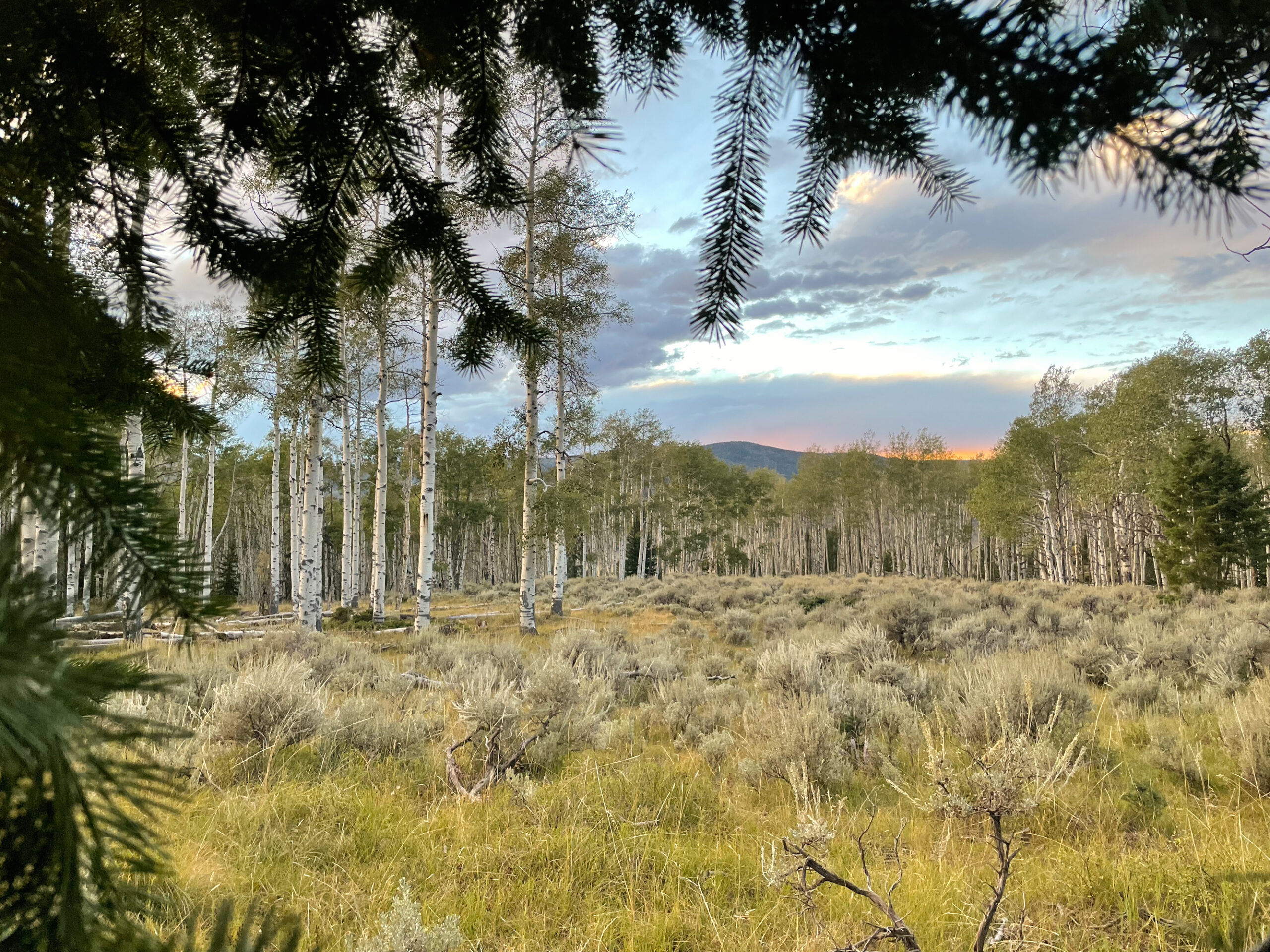
With just a few minutes of light left, I decide to check a public slope beyond the aspen glade. I pick my way through the timber until I emerge in a shadowy shooting lane. And there, not 60 yards away and headed downhill with a half-dozen cows trailing behind, is another big bull.
The opportunity is so sudden and perfect I might have imagined it, but my immediate and uncontrollable shaking indicates it’s very real. I try three times to deploy the shooting sticks in my hand; all I manage is to rattle the tripod legs. Then the wind switches and the bull throws his heavy head forward, leading his cows in a stampede down the mountain.
As I hike back, rain spitting in my face and bugles echoing up from below, I tell myself today was still a victory. Other hunters said I could expect to kill a 300-to-320-inch bull in this unit. The first bull was at least 330, maybe more, and I could have shot him. The property line was just a pesky technicality in an otherwise flawless hunt. And I put myself into position to kill yet another good bull before the wind betrayed me.
But I know these are lies even as I think them.
Friends in Low Places
As much as I relished hunting alone the last two days, the glow inside the two-man tent is a welcome sight when I slog into camp an hour later. I shed gaiters and sweat-soaked layers while Kali boils water, not bothering to leave her sleeping bag as she rehydrates a Mountain House for me. I slip inside my own bag to eat as the wind and rain pick up. Exhaustion forgotten, we talk late into the night about the hunters she met at the trailhead (“You’re camped up there?”), the elk each of us saw today, and my plan for tomorrow. Kali had spotted a bull and his cows on her way back in. I want to catch the bull I found long before he crosses the property line.
When we step into the aspen glade the next morning, the herd is so deep into the private land that we can’t see it. We stake out the meadow anyway and listen to elk drift agonizingly closer all day. Finally, a pair of good satellite bulls trot into view and bed among the private aspens. We can just see them through the sea of white trunks: a whale tale here, a closed eye there. One bull is caked in mud, his thick antlers as brown as his body.
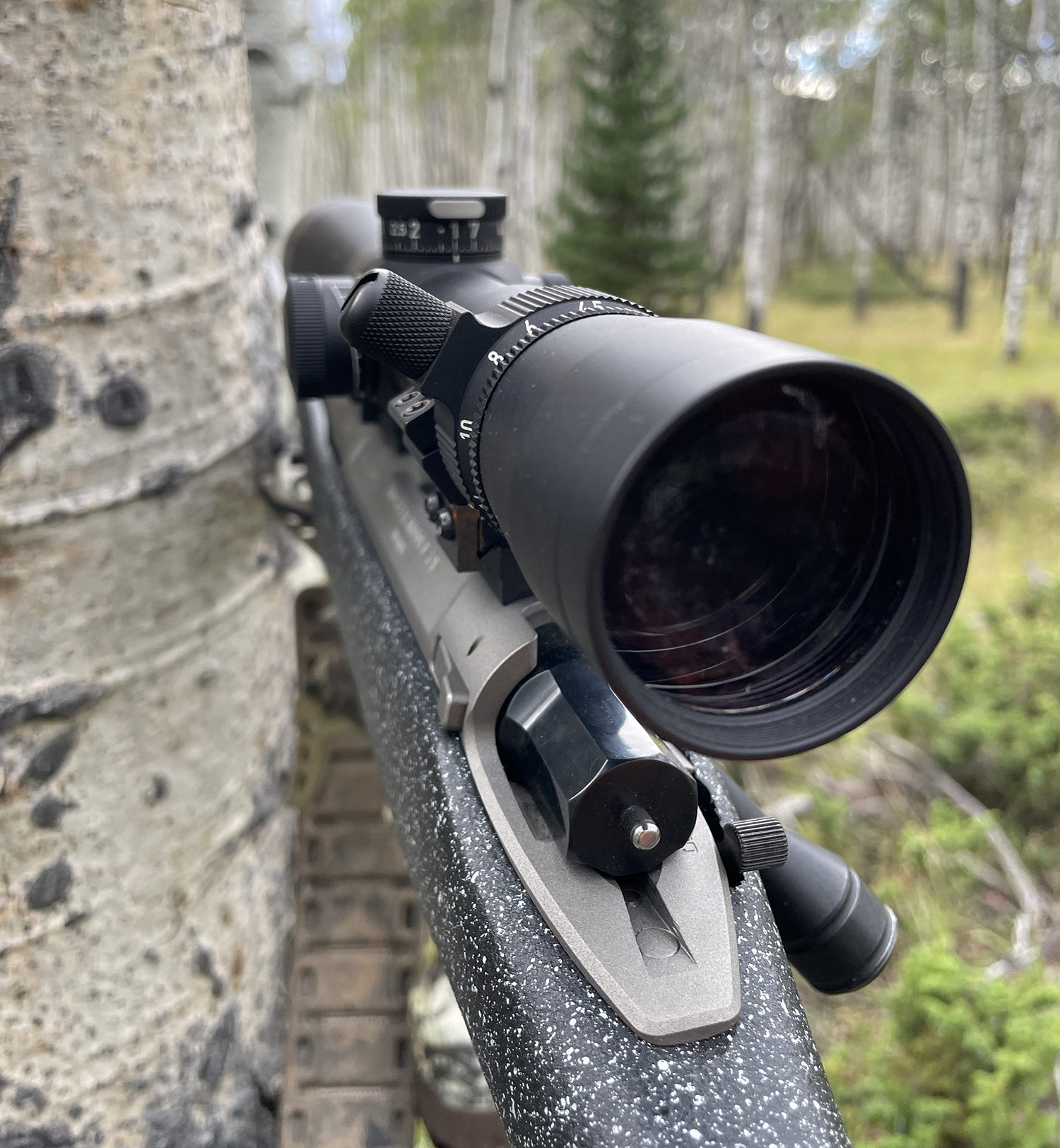
As we wait, a message flashes on my Garmin inReach. Aram is driving home from his own elk hunt and asking after mine. My unit isn’t far out of his way, and we text about the logistics of him swinging by.
How do you know what kind of hunter you are, I think, staring at the little screen, if you’ve always got help?
Then three cows come tearing into the clearing, herd bull on their heels.
“Holy shit,” Kali whispers, and I feel, if not smug exactly, at least justified in having dragged her down here. Today I am calm on the sticks, ready to shoot the moment he steps onto public. Instead, I watch him scream through the scope as he rounds up his cows and ushers them out of sight again.
The practical part of me pointed out that more eyes make for better glassing and even deboned quarters weigh a ton. I don’t have anything to prove to anyone, so why rush into the mountains like I do?
That evening, I finally call a third satellite bull onto public—one Kali hopes I’ll shoot. But he’s young and curious, and I’d rather keep hunting.
“You’re a damn mountain goat,” Kali grumbles from below as we climb toward camp in the dark, and I can’t help but grin. At least I hike like an elk hunter.
Halfway up the mountain, our inReaches ping with messages from buddies warning of hail and flash flooding. I agree to pack up camp and hike down to our trucks that night. As the sky splits open with near-simultaneous thunder and lightning, I find I have another message waiting that has nothing to do with the weather.
Aram’s question is direct: “Would you like my help?”
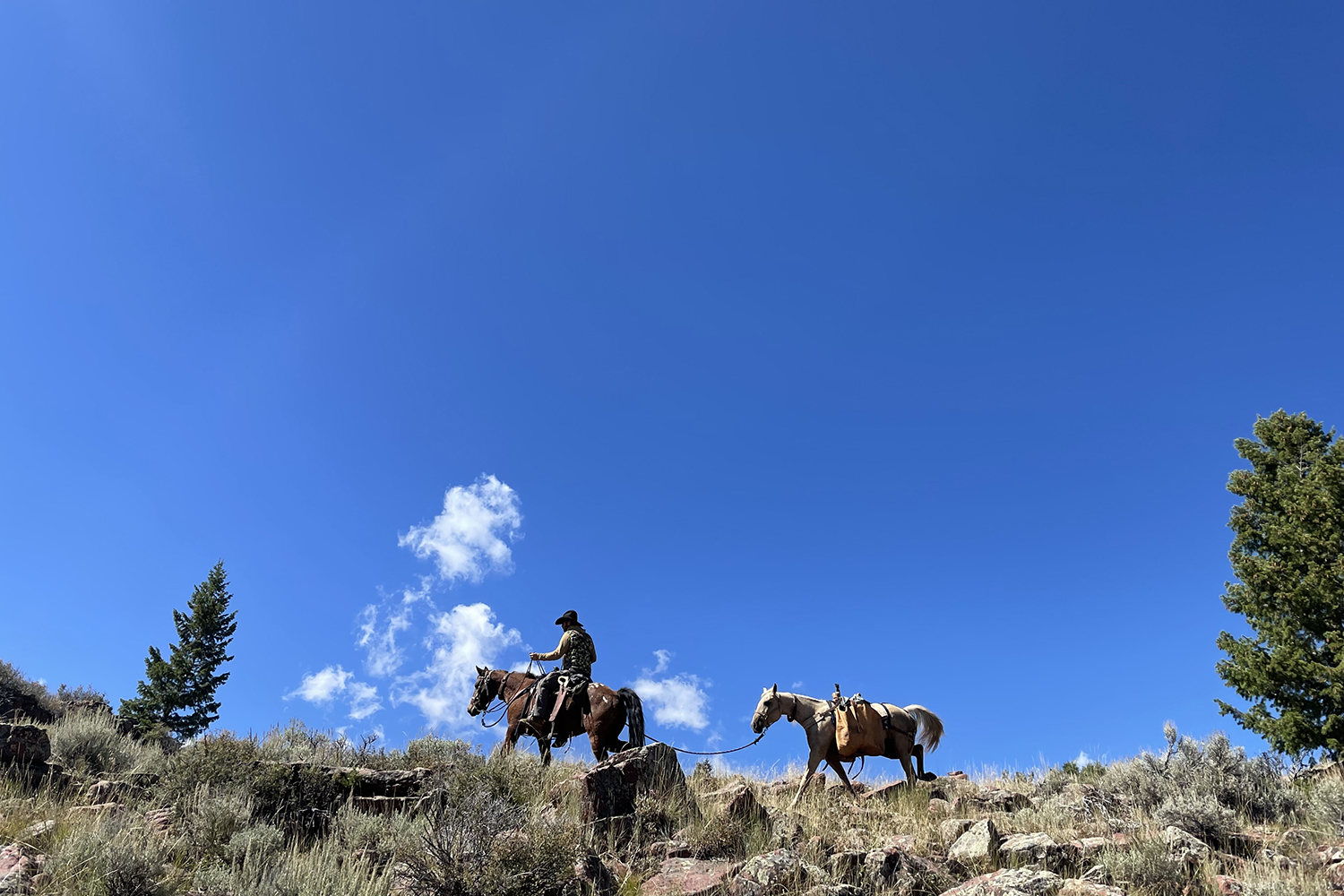
The Cavalry
When Aram and his 14-year-old son, Josiah, roll into my campsite the next morning, Kali has left for work and I’ve got a good bull spotted across the reservoir. The von Benedikts look as tired as the packhorses in their trailer, every one of them spent from a week in the Montana wilderness. It’s the sixth day of my nine-day season, though I’ve been in these mountains for two full weeks now. I’m feeling delirious from physical exertion and decision fatigue. Aram mostly just listens as the words tumble out. I explain what the elk are doing, what I’ve been doing, and about each of the bulls I should have killed.
As it turns out, Aram informs me, you can legally hunt private property in Utah as long as it fits a strict set of criteria. I check the regulation booklet in my truck and groan. That herd bull had been perfectly legal all those times I chose not to shoot.
“I see three obstacles to filling your tag,” Aram says, listing them off. “First is the private property problem, which I think we just addressed somewhat. The second is time. You are running out of time. Third—and I’m just being honest—you don’t think you can do it.”
He would have been right a couple hours ago, but the uncertainty of filling my elk tag has vanished with Aram’s arrival. He’s the kind of hunter who kills game. When I hunt with him, I am too. There’s no denying I’ve traded some adventure for security. But at this point, I don’t care anymore.
Two hours later, the three of us are riding over the same country Kali and I hiked nearly a week ago, each with a packhorse in tow. I’m anxious about reaching thick timber where the horses can’t go, but we hear bugles long before that problem arises. It’s early afternoon, and the bulls are noisy on the other side of the ridge. We tie our horses and crawl onto a pile of rocks. A hundred yards away, in the drainage below, a 6×6 is badgering a sleepy cow.
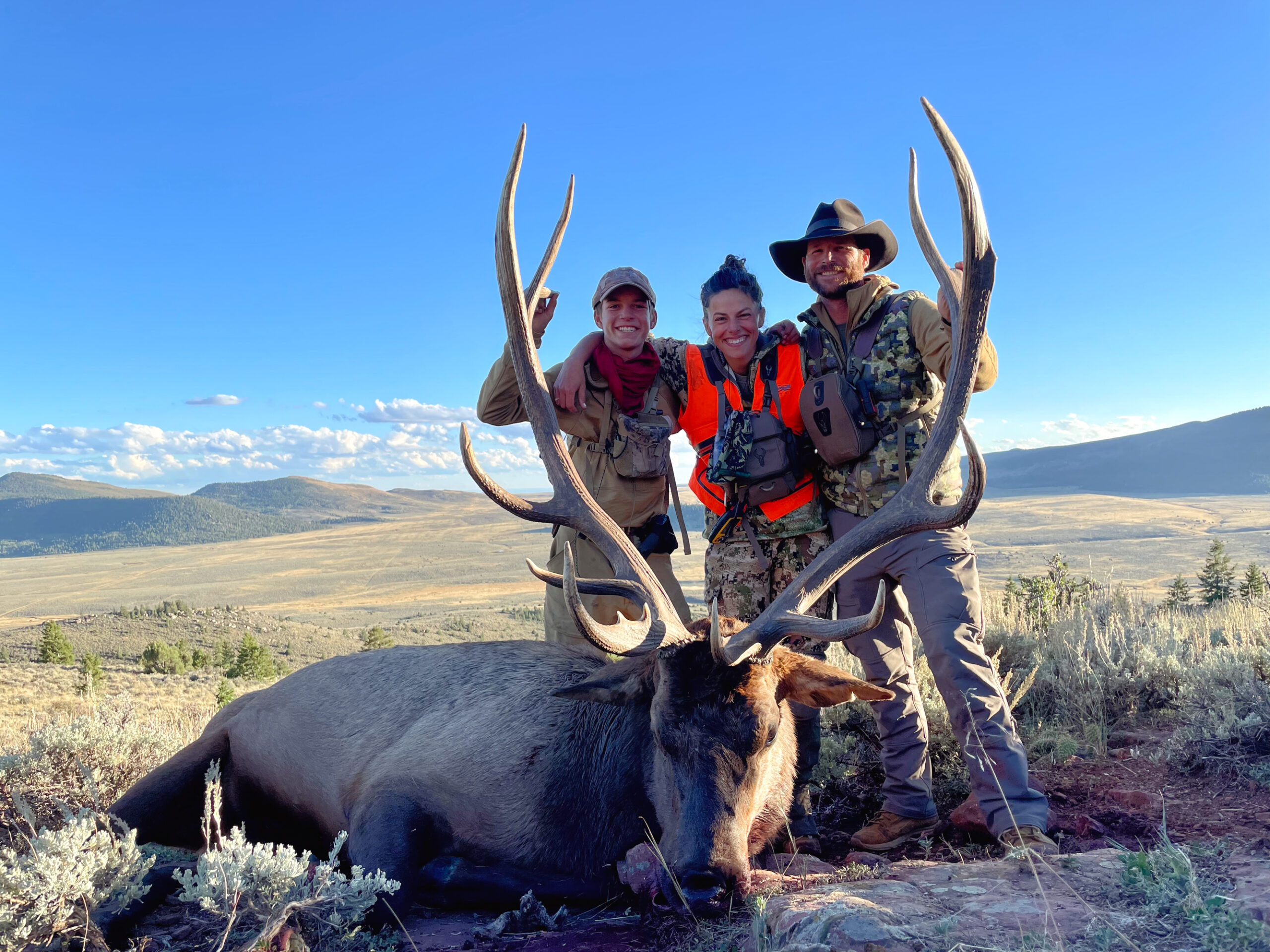
“Are you interested in him?” Aram asks, and I shake my head.
The sun’s warm and the wind is in our favor, carrying the sound of more bugles to us from the next drainage. I lie behind my rifle all afternoon, watching elk drift between our drainage and the one out of sight. There are elk everywhere. At one point a much heavier 6×6 appears. I’m interested in this one, but Aram catches a glimpse of what might be a bigger bull over the ridge.
A shot rings out nearby, and the elk get nervously to their feet. Eventually they settle again, and the whole mountain seems to fall asleep. Aram and Josiah nap, and even the restless young bull closes his eyes, head nodding on his neck. I rest my cheek on the rifle stock but keep my own eyes on the ridge.
Someone starts firing wildly on the other side of the draw—half a dozen shots in all. The whole herd is on its feet now, and the bull we’ve been waiting for shoves his way into our drainage. Aram was right: This one is bigger. He’s also behind a tree.
The bull wobbles and stumbles 40 yards. As soon as he stops, I shoot again, dropping him where he stands.
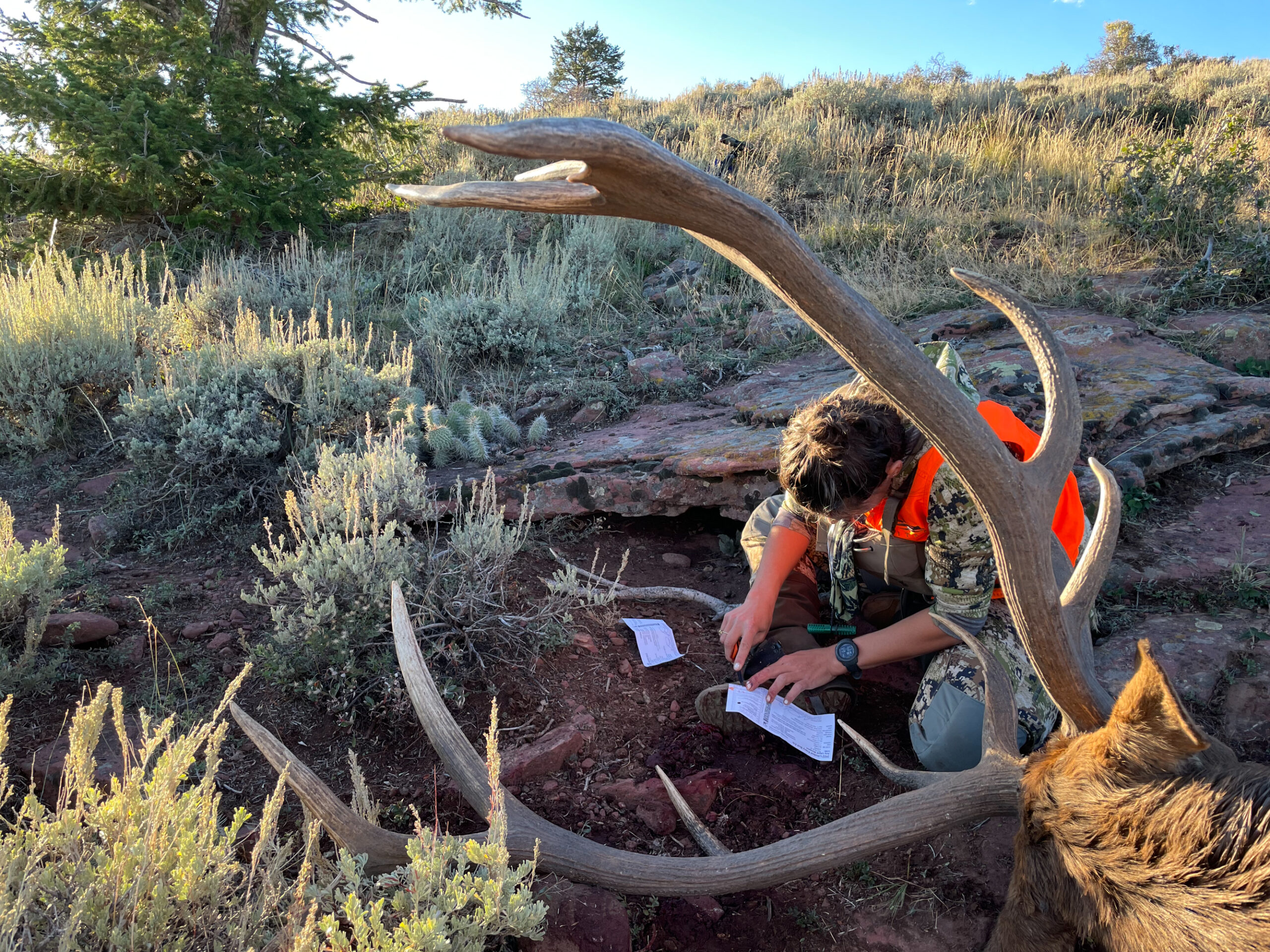
Many Hands
When Aram and Josiah hustle to retrieve the packhorses, I hang back a moment. There’s a bull at my feet—an incredible trophy bull with a scarred forehead and three stickers on one beam—and I still can’t quite believe it.
“Here’s another way to think of it,” Aram will point out later, after rough-scoring the antlers at 359 6/8 back in town. “You made the most of this tag. You’ll have chances to hunt elk by yourself, but you may never draw a tag like this again. And you used it to kill what may be the biggest bull in this unit, and what may be the biggest bull you ever kill in your life.”
I’ll chew on that for weeks. This tag prompted me to pull out all the stops with a summer scouting trip, another week of scouting before the opener, and six hard days of hunting and passing (and missing) good bulls. I learned to call elk. I pinpointed a mountain teeming with them and ultimately killed this one half a mile from my first spike camp.
The concept of a solo hunt, I will come to realize, was always a false pretense. Hunting partner or no, I had help the whole time. I took advice from half a dozen buddies and as many acquaintances to prepare for this, and I drew on past hunts with other elk hunters that informed my approach. I’m the product of many hunters. It was always misguided to think I could take sole credit for killing a bull.
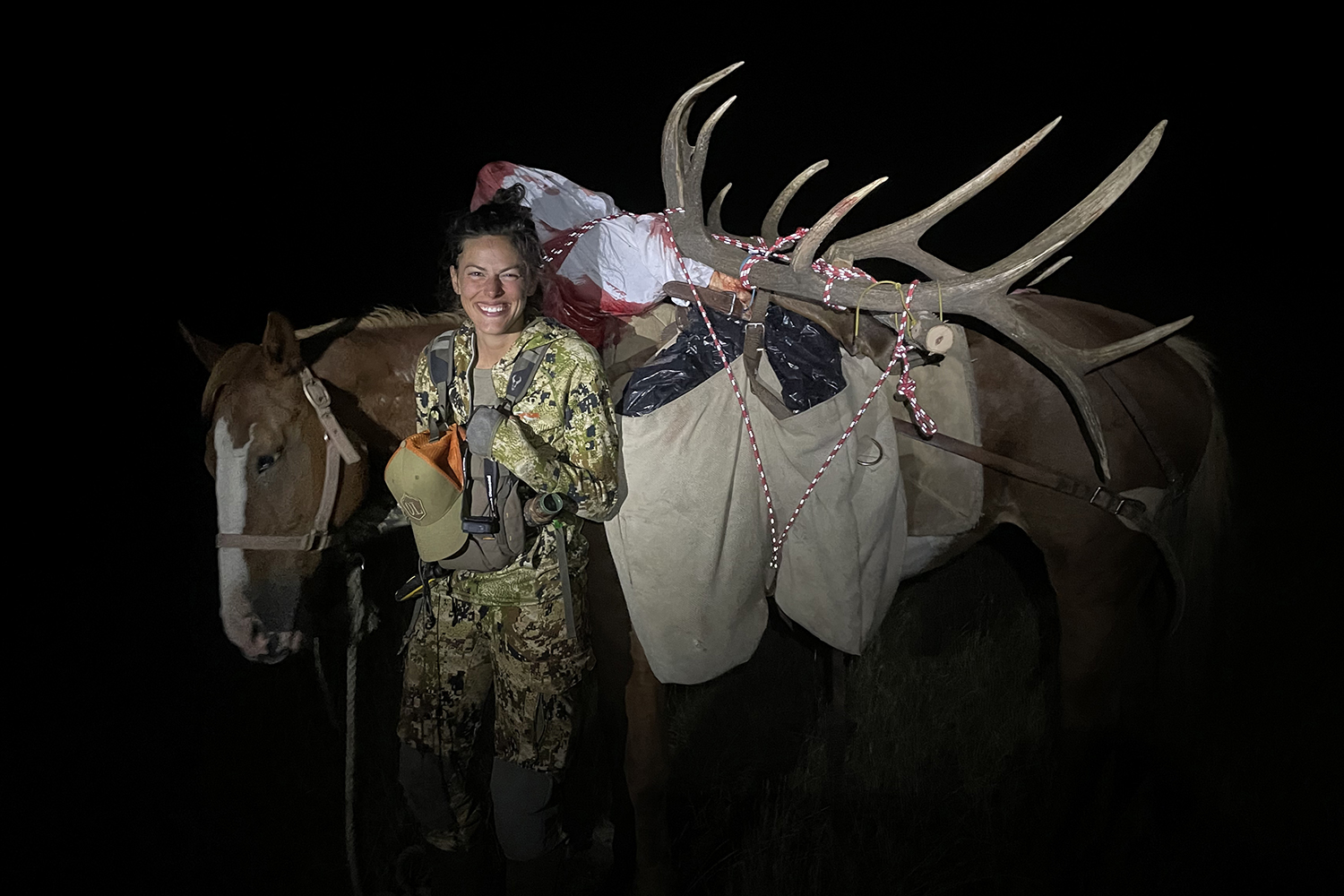
Quartering and packing out this elk by myself would have taken all night and the next day; with two cowboys and six ponies, it takes a few hours. We ride into camp an hour after dark, then set to work unloading and feeding horses. Chores done—meat hanging from the trailer, the skull propped beside it—I join my friends around the campfire.
Read more OL+ stories.
